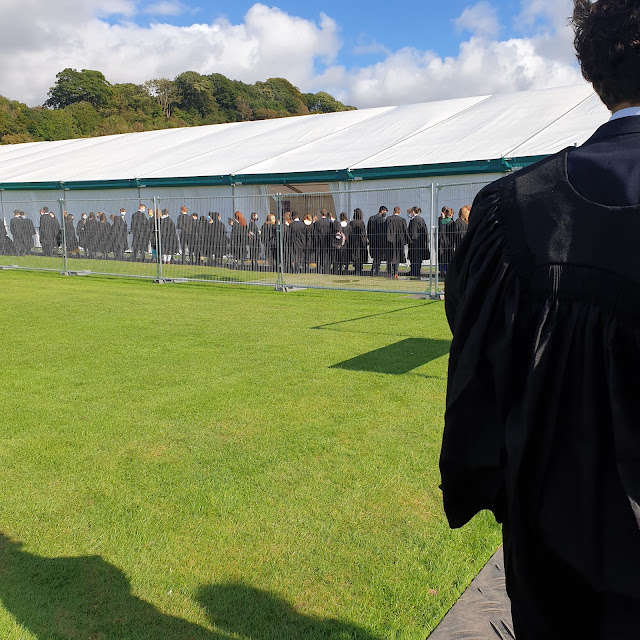In the early weeks of our seminars (a.k.a tutorials), my class pondered on readings about visual essentialism (by Mike Bal), the early modern periods and art nouveau in fin-de-siecle period etc. Visual Culture is multimodal and multisensorial, not just by using our visions. The study of visual culture is to grasp their place in broader contexts of meaning and experience. It may be the core in which we can examine the geopolitics and aesthetics of a national culture as displayed in a museum, gallery or an artefact.
Dr Zoe Roth questioned our definition of 'aesthetics', 'the aesthetic' and 'common sense'. After digesting our readings, we defined them in our own words. There's a great sense of satisfaction to having my old thoughts disrupted. Art teachers are usually in the 'aesthetic department' in the school context and by that I mean art and music teachers are in the same department. How often do we deconstruct the meaning of words to think and discuss the basic and fundamentals?
These are samples of weekly questions to guide our readings:
- Bring two questions about the reading to class. These could be concepts you need help defining, ideas that are unclear, something that relates to your own research interests, etc.
- How are aesthetics and the aesthetic relevant to the study of visual culture? How can you think of visual culture through the lens of sense perception, common sense, the distribution of the sensible?
- What are the similarities between Arendt and Ranciere’s concepts of “common sense” and the “distribution of the sensible” respectively?
- How can forms of aesthetic production help reorder the distribution of the sensible?
- What happens if "common sense" breaks down?
- What are some ways aesthetic and politics are linked? Give examples.
I've enjoyed listening to my classmates' thoughts and comparing their responses to mine. Very often, the questions might look seemingly straightforward but it isn't so. For example, the question about 'common sense' is not what the general public's understanding of it. Our responses are based on the context of our readings and also to produce a few real-life examples.
The readings on Hannah Arendt's The Life of Mind, first chapter on Thinking is essentially a philosophical view on thoughts. She asks the overarching question if thoughtlessness is connected to evil. Admittedly, we only need to read the first few pages of her book for class but it took me long enough to read reviews about her book from various sources and then draw my own conclusions. Arendt wondered if the absence of thinking lead people to wrongdoings?
That said, perhaps it is not that people refuse to do thinking but it's the lack of choice. In Jacques Ranciere's The Distribution of the Sensible: Politics and Aesthetics, he argued that people do not have time to devote themselves to anything beside their work. Thus, it can be through artistic practices that 'ways of doing and making' that intervene in the community that things get maintain to 'modes of being and forms of visibility'. For example, homelessness on the street can be a common sight in some big cities. Due to the prevalence and the lack of urgency, most people are desensitise to the state of the homeless they see on the street. Thus, what "distribution of the sensible" inscribes to is the suggestions of the community actvities such as participatory art/ relational art or community art practices which we commonly see to create a sense of community.























